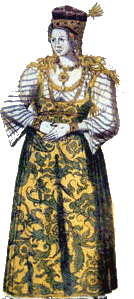|

| |
1
OF 6 |
 |
HAREM, AND THE OTTOMAN WOMEN
Historical Background
 The
harem was defined to be the women's quarter in a Muslim household.
The Imperial harem (also known as the Seraglio harem) contained
the combined households of the Valide Sultan (Queen Mother), the
Sultan's favourites (hasekis), and the rest of his concubines (women
whose main function was to entertain the Sultan in the bedchamber).
It also contained all the Sultanas' (daughters of the Sultan) households.
Many of the harem women would never see the Sultan and became the
servants necessary for the daily functioning of the harem. The
harem was defined to be the women's quarter in a Muslim household.
The Imperial harem (also known as the Seraglio harem) contained
the combined households of the Valide Sultan (Queen Mother), the
Sultan's favourites (hasekis), and the rest of his concubines (women
whose main function was to entertain the Sultan in the bedchamber).
It also contained all the Sultanas' (daughters of the Sultan) households.
Many of the harem women would never see the Sultan and became the
servants necessary for the daily functioning of the harem.
The reasons for harem existence can be seen from Ottoman cultural
history. Ottoman tradition relied on slave concubinage along with
legal marriage for reproduction. Slave concubinage was the taking
of slave women for sexual reproduction. It served to emphasize the
patriarchal nature of power (power being "hereditary"
through sons only). Slave concubines, unlike wives, had no recognized
lineage. Wives were feared to have vested interests in their own
family's affairs, which would interfere with their loyalty to their
husband, hence, concubines were preferred, if one could afford them.
This led to the evolution of slave concubinage as an equal form
of reproduction that did not carry the risks of marriage, mainly
that of the potential betrayal of a wife. The powers of the harem
women were exercised through their roles within the family. Although
they had no legitimate claim to power, as their favour grew with
the sultan, they acquired titles such as "Sultan Kadin"
which solidified their notion of political power and legitimacy
within the royal family was reflected with titles including "sultan."
During the sixteenth century, both male and female members of the
imperial family used the title of "sultan". As the role
of the royal favourite concubine (title: Sultan) eroded during the
seventeenth century, the title designation also changed to "kadin"
or "haseki," which were names originally reserved for
less prominent members of the royal family. Henceforth, only the
mother of the reigning Sultan was addressed as a Sultan: the Valide
Sultan. The retention of the title of Sultan for the mother indicated
the power of the Valide Sultan. After all, men could take as many
concubines and odalisques as they desired, but they only had one
mother.
| |
1
OF 6 |
 |
|


